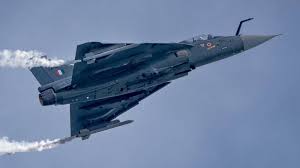UK or France? Cabinet waits for DRDO on combat aircraft engine

India is on the verge of a major defense decision. The Cabinet is waiting for a recommendation from the Defence Research and Development Organisation (DRDO) to choose a foreign partner for co-developing a 110-kilonewton (kN) jet engine. This engine will power the Mark II variant of the Advanced Medium Combat Aircraft (AMCA) — a stealth fighter designed and built in India.
The two main contenders are France’s Safran and the UK’s Rolls-Royce. The choice will shape India’s defense and aerospace capabilities for decades to come.
Why This Engine Is So Important
The AMCA is India’s answer to fifth-generation fighter jets like the F-35 and China’s J-20. It promises stealth features, advanced avionics, and the ability to supercruise. However, to achieve all this, the AMCA needs a powerful and reliable engine.
While the initial AMCA Mark I will use General Electric’s F414 engine (98 kN), the Mark II requires a more powerful, indigenous solution. India plans to build this 110 kN-class engine in partnership with a global firm. That’s where France and the UK come in.
France’s Safran: A Strong Front-Runner
Safran has offered a full co-development deal. The French firm has promised 100% technology transfer and complete intellectual property (IP) rights to India. This means India will own the engine design and can even export it in the future.
India and Safran have already worked together. Hindustan Aeronautics Limited (HAL) and Safran signed agreements to co-develop engines for helicopters. Talks for fighter jet engines have also progressed significantly.
French officials say India will gain full access to core engine technologies. However, both countries are still negotiating on key terms like costs, export permissions, and timelines. These details will be critical for the final decision.
The UK’s Rolls-Royce: A Close Competitor
Rolls-Royce also wants to partner with India. The British company has shown interest in sharing technology and IP rights. It also offers something unique — access to a flying testbed. This could help India test and certify the engine faster, since DRDO currently lacks such a platform.
Rolls-Royce has pitched a co-development model and is open to long-term collaboration. However, compared to France, its proposal is less advanced. Some terms are still being discussed.
Despite that, the UK remains a strong contender due to its long history in aviation and its willingness to transfer high-end technology.
Why the US Isn’t in the Race
The United States is supplying the F414 engines for AMCA Mark I. But for the Mark II engine, it hasn’t offered co-development or full tech transfer. As a result, the US is not in contention for this high-thrust engine program.
India’s decision to focus on France and the UK reflects its desire for complete ownership and control over future combat aircraft technologies.
DRDO’s Key Role in the Decision
DRDO is currently reviewing the proposals from both Safran and Rolls-Royce. The agency will recommend one option based on technical strength, cost-effectiveness, and long-term benefits. Once DRDO makes its choice, the Cabinet will take the final call.
Here’s what DRDO is looking at:
- Level of technology transfer and IP access
- Time needed for development and testing
- Export permissions and restrictions
- Cost-sharing and investment models
- Opportunities for future upgrades
Sources say DRDO’s recommendation may come within a few months. After that, the Defence Acquisition Council and the Cabinet Committee on Security will approve the deal.
The Stakes Are High
This decision is not just about picking an engine partner. It will define who becomes India’s top defense collaborator in combat aviation. The selected partner will get access to Indian defense firms like HAL, DRDO labs, and the AMCA program.
The engine developed through this program could also power other platforms in the future, like upgraded Tejas fighters or unmanned combat aircraft.
Choosing the right partner now could ensure India’s independence in jet engine technology for decades.
What’s Next?
India is moving closer to finalizing this historic defense deal. Safran has the lead due to its concrete offer and existing presence in India. But Rolls-Royce remains in the race and could win if its final terms are favorable.
The Cabinet’s decision, once DRDO submits its recommendation, will shape the future of India’s aerospace industry. It could also boost the country’s Make in India and defense export goals.






